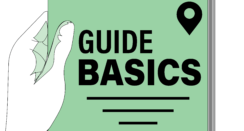It is essential that during our communication we are able to establish a conversation that makes a tolerable sense for our interlocutor. This structure unconsciously created by our reasoning when engaging in a dialogue with one or more people is called syntax. That is why it becomes so important to carry out the syntactic analysis of the sentences, in a badly elaborated sentence it will be impossible to carry out a syntactic analysis.

How to teach parsing?
The task of carrying out a syntactic analysis becomes easier when we are able to memorize a sequence of steps that makes it easier for us to carry it out. When with practice we are able to memorize this routine, the analysis will come out almost automatically. Next, you should pay close attention if the time has come for you to transmit this knowledge to your son, your nephew or if you are simply putting your gray matter to work for when that moment arrives.
Routine to perform parsing.
- Interpretation
There are those who omit this step, however, it is important to reason what each of the present words of the text that we want to analyze means. If we were unaware of any, we should not hesitate to use the dictionary.
- Classification of the sentence by its structure (bimember, unimembre)
Bi-membered: Those that are present in the verb are recognized as bi-membered sentences and can also be divided into subject and predicate. Example: Light eyes are striking.
Unimbre: It is made up of a single phrase, which means that it only has a subject or only a predicate. Ex: Good evening.
- Classification of the sentence according to its mode (declarative, interrogative, doubtful, wishful, imperative, exclamatory)
- Declarative: It deals with mentioning or enunciating something. Affirms or denies the truth of a fact.
- Interrogative: Ask a question. (question marks present)
- Doubtful: Assumes a fact that is considered doubtful and insecure.
- Desirative: Expresses the desire that a fact be done or not done.
- Imperative: They express an order or mandate to carry out.
- Exclamatory: Exclaim something. (exclamation points present)
- Identify the subject or subject noun phrase and its nucleus
In the sentence the subject is who is spoken of (person, animal or thing). If we ask what? who? or who? to the verb included in the sentence we will identify the subject. In the subject noun phrase the noun will be our nucleus.
- Identify the predicate or predicate verb phrase, nucleus and type (Nominal, Verbal)
The predicate is the word or words that expresses what is said about the subject. In the predicate verb phrase the verb will be our nucleus. The predicate formed by linking verbs (seem, be, be) is known as Nominal Predicate (NP). While the one in which the non-copulative verbs (remaining verbs) are present is called Verbal Predicate (VP).
- Identify verbal complements and their classifications (Direct, Indirect, Circumstantial)
- Direct Object (CD):Person or thing in which the action of the verb falls immediately.
- Indirect Object (IC):Receiver of the action carried out by the verb and that is received through the direct object.
- Circumstantial Complement (CC): It is capable of describing how what was done by the verb happened (the way, the place, the time, etc.)
- Verify correspondence between the nucleus of S and the nucleus of P.
The subject head must always have the same grammatical person and the same number as the predicate head.
Illustrating a syntactic analysis.
In cold countries, winter is always a prodigal time for car accidents. Assuming that, after the interpretation phase, which as I mentioned is not less important, we will go directly to the second step.
- Classification of the sentence by its structure (bimember, unimembre)
We clearly see that it is a bimembered sentence (S + P)?
- Classification of the sentence according to the attitude of the speaker (declarative, interrogative, doubtful, wishful, imperative, exclamatory)
In this case it is a declarative sentence and since it assures us something it is affirmative.
- Identify the subject noun phrase and its head.
The subject is nothing more than that person or thing about which something is mentioned and who performs the action of the verb. If we ask the verb what? It is always a prodigal season in car accidents. The answer will be winter. The core will be winter.
Subject: winter, Core: winter
- Identify the predicate or predicate verb phrase, nucleus and type (Nominal, Verbal)
Knowing that the predicate is what is said of the subject then:
Predicate: In cold countries it is always a prodigal time in car accidents.
Core: results, Predicate Type: Verbal
- Identify verbal complements and their classifications (Direct, Indirect, Circumstantial)
We analyzed all the possibilities and only managed to obtain the existence of circumstantial complements.
CC (Place): In cold countries, CC (Time): always
- Verify agreement between the head of the subject and the head of the predicate.
Both are in the third person singular.
Teaching parsing matters a lot.
Syntactic analysis is the perfect guide that we must follow to enrich both the rules of writing and the rich culture of communication. Without correct syntactic analysis, it would be impossible to transmit knowledge and communicate effectively. If we make it possible for our children to be able to master the basic requirements of syntax, we will also be making them capable of expressing themselves and capturing their ideas with greater meaning and depth. Finally, thanks to analysis, the comprehension process is an easy and pleasant task, guilty of the passion for works of literature.
